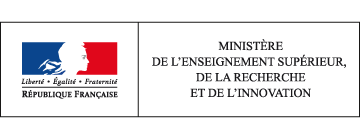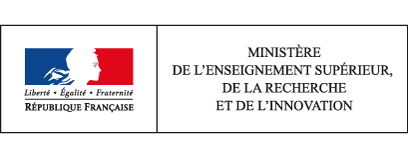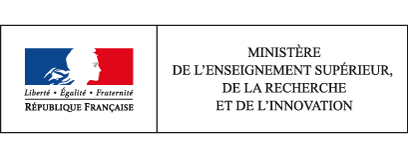31 the R&D tax credit: an incentive for firms to increase their R&D expenditure
This page has been updated. Read 31. the R&D tax credit: an incentive for firms to increase their R&D expenditure in Higher education & research in France, facts and figures 10th edition - June 2017
The number of firms claiming the R&D tax credit (CIR) has risen sharply since the scheme was reformed in 2008. Nearly all firms currently conducting R&D in France are aware of and make use of the R&D tax credit when carrying out R&D projects. The amount of R&D tax credit paid out in 2012 totalled €5.3 billion, equivalent to 0.26% of French GDP and double the amount of direct government funding for business R&D.
Many countries now use tax incentives to stimulate more spending on research and development (R&D). The development of such incentives over the past decade is explained in part by the fact that this type of financial support is well-suited to today’s culture of innovation, which is both demanding and fast-moving. Unlike subsidies, tax incentives give firms the freedom to choose their R&D projects, without targeting a particular sector or technology. They are therefore well-suited to the complexity and multidisciplinary nature of innovation processes. The increased use of tax incentives also reflects the competition that exists between different countries when it comes to attracting R&D centres.
Since the 1990s, the amount of direct public funding for R&D in France has shown a downward trend, due in large part to reductions in funding for defence R&D. Direct public funding has accounted for less than 0.15% of France’s GDP since the end of the 2000s (chart 31.01). However, the amount of funding made available through the R&D tax credit (crédit d’impôt recherche – CIR) began to increase from 2004, and since 2008 has exceeded the amount of direct funding to settle at around 0.25% of GDP. Total government funding for business R&D in France accounted for 0.37% of GDP (chart 31.01), leaving France behind South Korea but far ahead of the United States, Germany and Japan.
The expansion of the CIR has encouraged a growing number of firms – and small firms in particular – to apply. More than 20,400 firms declared their R&D expenditure for the 2012 financial year and nearly 15,300 received the CIR (table 31.02). SMEs that were deemed autonomous for tax purposes accounted for 76% of the firms that received the CIR, 23% of declared expenditure and 25% of the CIR paid out. Firms with fewer than 10 employees, 97% of which were deemed autonomous for tax purposes, accounted for nearly 37% of firms that received the CIR.
The amount of CIR paid out was logically focused on firms with the highest R&D expenditure, but the proportion of CIR received by small enterprises and micro-firms was greater than that of their R&D expenditure. This is explained by the way in which the CIR works. It includes higher rates of relief for new Firms, which are often SMEs, as well as a reduced rate of relief (5%) for expenditure above €100 million (see ‘Methodology’ section opposite).
As in previous years, it was the ‘Electrics and electronics’ sector that declared the most expenditure (15%) and received the most CIR (16%) (table 31.03). Within this sector, the ‘manufacture of electronic components’ accounted for 4% of declared expenditure and CIR received. The ‘manufacture of basic pharmaceutical products and pharmaceutical preparations’ was the second largest sector in terms of declared expenditure (13%) and the third largest in terms of CIR received (11%). Certain activities within the service sector continued to grow. ‘Computer-related consultancy and support’ was the second largest sector in terms of CIR received (€633 million), while ‘architectural and engineering services’ came fourth with €530 million. They received more CIR than the ‘manufacture of motor vehicles’ and the ‘manufacture of ships, aircraft and rolling stock’.
There are several possible explanations for the difference between the proportion of declared expenditure and that of CIR received in certain sectors. New firms and small enterprises increase the amount of CIR received for a given amount of R&D expenditure, while expenditure over €100 million by a single firm has the opposite effect due to the application of a reduced rate of relief above this threshold. As a result, the relatively high proportion of CIR received by the ‘computer-related consultancy and support’ sector is explained by the large number of new small enterprises in this sector that received higher rates of relief. Conversely, the ‘manufacture of motor vehicles’ sector included several large central laboratories that declared high levels of expenditure.
R&D that is outsourced to dedicated research institutions is subject to a higher rate of CIR. This kind of research accounted for €449 million of the CIR base (after the maximum limits for subcontracting had been applied) in 2012, up 159% on 2007. Expenditure that was outsourced to dedicated research institutions accounted for 72% of expenditure outsourced to dedicated research institutions (table 31.04). Higher education institutions accounted for 13% of the total, an increase in comparison with 2011.
Justin Quemener & Frédérique Sachwald
MENESR-DGESIP/DGRI-SIES
MENESR-DGRI.
How to cite this paper :
close
Key figures
Whole of France
Whole of France
Whole of France
Whole of France
Whole of France
Whole of France
Whole of France
Whole of France
Whole of France
Whole of France
Whole of France
Whole of France
Whole of France
Whole of France
Whole of France
Whole of France
Whole of France
Whole of France
Whole of France
Whole of France
Whole of France
Whole of France
Whole of France
Whole of France
Whole of France
Whole of France
Whole of France
Whole of France
Whole of France
Whole of France
Whole of France
Whole of France
Whole of France
31.01 Changes in government funding of business R&D and of intramural business enterprise expenditure on R&D (as % of GDP)
In 2012, intramural business enterprise expenditure on R&D accounted for 1.44%, the R&D tax credit 0.26% and direct government funding 0.12% of GDP.
MENESR-DGESIP/DGRI-SIES
You can embed this chart to your website or your blog by copying the HTML code and pasting it into the source code of your website / blog:
close
31.02 Beneficiaries of the R&D tax credit (CIR), declared expenditure and CIR paid out in 2012, by size of firm
51.8% of the firms that received the R&D tax credit (CIR) employed between 10 and 249 people. 85.4% of the firms that received the CIR and employed between 10 and 249 people were deemed autonomous for tax purposes.
1 Firms deemed autonomous for tax purposes
You can embed this table to your website or your blog by copying the HTML code and pasting it into the source code of your website / blog:
close
31.03 Breakdown of declared expenditure and of the R&D tax credit paid out in 2012 1, by sector (as % and in €M)
1 After reallocation of the Holding Company and R&D Services sectors.
2 The amounts corresponding to R&D were broken down according to the sector making use of them, in cases where this was not the R&D Services sector itself.
3 'Agriculture, Forestry and Fishing', 'Building and Civil Engineering' and unspecified activities (0.1%).
You can embed this table to your website or your blog by copying the HTML code and pasting it into the source code of your website / blog:
close
31.04 Breakdown of expenditure outsourced to institutions that conducted public research in France 1 in 2012
1 Total from invoices declared by firms in the appendix to their tax return, with no duplication of items or upper limits.
2 The data collected from these appendices cover 98% of the expenditure subcontracted to institutions that conduct public research (€516 M).
You can embed this table to your website or your blog by copying the HTML code and pasting it into the source code of your website / blog:
close
Related statistical publication
 Note recherche 05.02 - Un panorama international des mécanismes nationaux d'aides fiscales à la recherche et à l'innovation - Stéphane Lhuillery - September 2005
Note recherche 05.02 - Un panorama international des mécanismes nationaux d'aides fiscales à la recherche et à l'innovation - Stéphane Lhuillery - September 2005 Translation
 Etat de l'enseignement supérieur et de la rechercheL'état de l'Enseignement supérieur et de la Recherche en France n°8 - juin 2015
Etat de l'enseignement supérieur et de la rechercheL'état de l'Enseignement supérieur et de la Recherche en France n°8 - juin 201531 - le crédit d'impôt recherche, dispositif de soutien à la R&D des entreprises - Justin Quemener & Frédérique Sachwald







